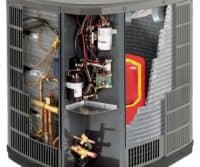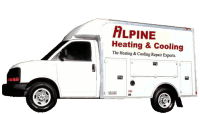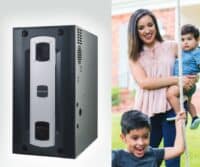
When it comes to managing home expenses, heating, ventilation, and air conditioning (HVAC) systems are significant contributors. Efficient HVAC systems not only ensure comfort but also help in reducing energy bills. For residents of Skagit County, Washington, there are several tax breaks and rebates available to make upgrading to energy-efficient HVAC systems more affordable.
Why Upgrade Your HVAC System?
Upgrading to an energy-efficient HVAC system has several benefits:
- Lower Energy Bills: Modern systems use less energy, translating into significant savings.
- Enhanced Comfort: Improved technology means better temperature regulation and air quality.
- Environmental Impact: Reduced energy consumption means a smaller carbon footprint.
- Increased Home Value: Energy-efficient homes are more attractive to potential buyers.
Five Federal HVAC Tax Credits
1. Energy-Efficient Home Improvement Credit
The federal government offers tax credits for homeowners who invest in energy-efficient improvements, including HVAC systems. As of 2024, you can claim up to 30% of the cost of a qualified HVAC installation, with a maximum credit limit set by the IRS. This credit covers the cost of the unit and installation.
How to Claim:
- Ensure the HVAC system meets the energy efficiency requirements set by the Energy Star program.
- Keep all receipts and manufacturer’s certification statements.
- File IRS Form 5695 when you do your taxes.
2. Residential Energy Efficient Property Credit
The federal government offers a tax credit for homeowners who install qualified energy-efficient property, including certain HVAC systems that use renewable energy sources. As of 2024, you can claim up to 26% of the cost of installing solar panels, solar water heaters, and other renewable energy HVAC systems.
How to Claim:
- Ensure the HVAC system meets the energy efficiency requirements set by the Energy Star program.
- Keep all receipts and manufacturer’s certification statements.
- File IRS Form 5695 when you do your taxes.
3. Nonbusiness Energy Property Credit
Homeowners can receive a tax credit for installing energy-efficient HVAC systems in their primary residences. This credit covers 10% of the cost of qualified energy-efficient improvements, including HVAC systems, up to a maximum of $500 for all years combined from 2006 to 2024.
How to Claim:
- Ensure the HVAC system meets the energy efficiency requirements set by the Energy Star program.
- Keep all receipts and manufacturer’s certification statements.
- File IRS Form 5695 when you do your taxes.
4. Geothermal Heat Pump Tax Credit
The federal government offers a tax credit for homeowners who install geothermal heat pumps. As of 2024, you can claim up to 26% of the cost of installing a geothermal heat pump, including labor costs for on-site preparation, assembly, and installation.
How to Claim:
- Ensure the geothermal heat pump meets the energy efficiency requirements set by the Energy Star program.
- Keep all receipts and manufacturer’s certification statements.
- File IRS Form 5695 when you do your taxes.
5. Small Wind Energy Property Credit
Homeowners can receive a tax credit for installing small wind energy systems, which can be used for heating or cooling purposes. As of 2024, you can claim up to 26% of the cost of installing a wind turbine system.
How to Claim:
- Ensure the wind energy system meets the energy efficiency requirements set by the Energy Star program.
- Keep all receipts and manufacturer’s certification statements.
- File IRS Form 5695 when you do your taxes.
Maximizing Savings with Puget Sound Energy Rebates for Heating

We don’t come across a lot of 30+ year-old equipment, but when we do, we see a lot of American Standard (Trane) furnaces. This reassures us just how good American Standard furnaces are built.
In this job, we had to keep the air conditioning coil in place and just replace the furnace. Having a flex connector above the AC coil makes this job much easier. We then added a 5” pleated filter bank under the unit. For years, these were considered 4” filter banks, but they measured out to 4-3/8”, so manufacturers started renaming them 5”. We recommend the 5” filter banks as the filtering systems are way better than the standard 1”.

Give us a call or message us for a quote! 360-755-5146

As the leaves turn golden and the air grows crisper in Skagit Valley, there’s nothing quite like the feeling of coziness that autumn brings. While you may be busy decorating your home, sipping on pumpkin spice lattes, and planning your next hayride in the Valley, it’s crucial not to forget about your HVAC system. As temperatures start to drop, ensuring your heating system is in top-notch condition with expert HVAC technicians becomes paramount.
Preparing for the Chill
Fall is the perfect time to give your HVAC system the attention it deserves. Our expert technicians are equipped to perform comprehensive maintenance checks, ensuring your system runs efficiently and effectively. From inspecting the ductwork to cleaning or replacing air filters, we leave no stone unturned.

Maximizing Energy Efficiency
As the days get shorter and the nights longer, your HVAC system will work overtime to keep you comfortable. Our professional services can help optimize your system’s energy efficiency, saving you money on your energy bills while reducing your environmental footprint.
Furnace Installation and Upgrades
If your existing furnace shows signs of wear and tear, it might be time for an upgrade. Our seasoned technicians can guide you through selecting a new, energy-efficient furnace that suits your comfort needs and budget.
Safety First
With the onset of cooler weather, ensuring that your heating system is safe to use is crucial. Our technicians are trained to detect and address potential safety hazards, such as gas leaks or faulty electrical connections, providing you with peace of mind.
Smart Thermostat Installation
Embrace the latest technology this fall by installing a smart thermostat. These innovative devices allow you to remotely control your home’s temperature, ensuring you return to a warm and inviting environment, even on the chilliest of evenings.
At Alpine Heating and Cooling, our expert HVAC team is dedicated to keeping your home cozy and comfortable throughout the fall season. Our experienced technicians are here to provide you with top-tier HVAC services, from routine maintenance to full system installations. Don’t wait until the cold weather sets in – schedule your appointment today with our expert HVAC team and let us help you make this fall your coziest yet!

As the leaves start to change and the air turns crisper, fall brings with it the promise of cozy evenings and warm beverages. It’s also the perfect time to consider upgrading your home’s heating system by installing a new heat pump.

Optimal Testing Conditions
Fall offers the ideal environment for testing and installing a new heat pump. The moderate temperatures provide a controlled setting for technicians to assess and fine-tune your system. This ensures that when winter arrives, your heat pump will be running at peak efficiency, providing consistent comfort without unexpected hiccups.
Energy Efficiency for All Seasons
Heat pumps aren’t just for heating; they also provide efficient cooling during warmer months. By installing a new heat pump in the fall, you’re preparing your home to handle the full spectrum of weather conditions. This dual functionality ensures that you get the most out of your investment year-round, ultimately leading to lower energy bills and reduced environmental impact.
Take Advantage of Off-Peak Seasons
Fall is traditionally considered an off-peak season for HVAC installations. This means you’re likely to find more flexible scheduling options and potentially even lower installation costs. By acting proactively in the fall, you can avoid the rush that often accompanies late winter or early spring installations.
Extend the Lifespan of Your System
Replacing your heat pump before it fails can save you from potential headaches in the middle of winter. Older systems tend to struggle as they age, resulting in uneven heating and cooling, higher energy bills, and costly repairs. Installing a new heat pump in the fall ensures you start the season with a reliable, well-functioning system, helping to extend its lifespan and reduce long-term maintenance costs.
Environmental Benefits
Heat pumps are renowned for their energy efficiency and low environmental impact. By upgrading to a new, high-efficiency model, you’re not only reducing your carbon footprint but also contributing to a more sustainable future. Additionally, many modern heat pumps use eco-friendly refrigerants that have a lower global warming potential, further enhancing their environmental credentials.
Access to the Latest Technology
The technology behind heat pumps is continually evolving. By installing a new system in the fall, you gain access to the latest advancements in efficiency, comfort, and smart-home integration. These features can enhance your overall living experience and ensure your home is equipped with the best tools to keep you comfortable.
Embracing the fall season by installing a new heat pump is a decision that brings numerous benefits to your home and your wallet. From optimal testing conditions to energy efficiency for all seasons, the advantages are clear. Don’t wait until winter is knocking at your door; take advantage of this opportune moment to upgrade your heating and cooling system. Invest in your comfort, your home’s efficiency, and a greener future today!

A ductless split system represents a significant investment in comfort, safety, and efficiency. To enjoy the many benefits of ductless technology, it is important to understand the various elements involved in a successful installation. Alpine Heating & Cooling encourages anyone considering an HVAC equipment purchase to explore the cost-effective and environmentally friendly solutions provided by ductless split system advantages.
The Advantages of Ductless Technology
Every year more homeowners in Skagit Valley become acquainted with the versatility of ductless air conditioners and heat pumps. When compared to traditional furnaces and central air conditioning equipment, mini splits offer numerous compelling benefits.
- Versatility: For room additions, garage conversions or areas requiring supplemental heating and cooling, ductless equipment is quiet, efficient and easy to install.
- Reduced Energy Costs: Point-of-use air handlers deliver conditioned air directly into each room without the loss of thermal efficiency associated with an air distribution network. Ductless systems include advanced inverter technology, which offers the highest SEER ratings in the industry.
- Better Comfort: The zoning concept behind ductless design saves energy and also helps improve indoor comfort. The temperature in every room can be tailored to meet the personal requirements of each occupant.
The Importance of Design
In the system design phase, Alpine Heating & Cooling complete calculations to establish the specific load requirements for every room in the building or home. Equipment is selected so that the capacity matches the heaviest theoretical load that could occur during extreme weather.
Many companies that use outdated “rule of thumb” formulas for sizing equipment can compromise comfort, humidity control and degrade system performance.
Why Choose Alpine Heating & Cooling
Regardless of the build quality of the equipment, Alpine Heating & Cooling will have a substantial impact on performance, efficiency, and longevity. Alpine Heating & Cooling has extensive experience and knowledge and provides important services that will help keep HVAC systems running dependably over an extended lifecycle.
Since heating and air conditioning is a highly specialized industry, it is important to choose a company that has a suitable level of knowledge and experience to address the specific requirements of the job.
- Areas of Expertise: Many HVAC companies specialize in a specific industry discipline. This includes new construction, retrofit, commercial HVAC and service. Alpine Heating & Cooling has the skill and expertise to directly meets the requirements for a particular application and will result in a more successful and less expensive outcome.
- The Screening Process: References and referrals are important tools to verify the quality of our work – check out our reviews!
Understanding SEER Ratings
The Seasonal Energy Efficiency Ratio (SEER) is a federal standard designed to provide consumers with an easy way to compare the operating costs for different brands and models of air conditioners. Relative efficiency between two machines can be calculated by dividing the higher SEER rating by the lower SEER rating. For example, replacing a 10 SEER air conditioner installed in the early 2000s with a high-efficiency 16 SEER unit can save up to 60 percent on annual cooling costs, depending on local climate conditions.
Energy Savings Tips
Homeowners can dramatically lower heating and cooling operating costs by changing minor lifestyle habits and considering several relatively inexpensive upgrades.
- Closing the Blinds: Window coverings provide protection against convection and radiant heat. Shades with a k-value rating can reduce the thermal gain from single-pane windows by up to 50 percent.
- Replace Light Bulbs: A conventional light bulb produces 10 percent light and 90 percent heat when it is lit. A compact fluorescent or LED light bulb is far more efficient, especially in climates with extreme summer heat. In fact, over half the total energy savings from a light bulb replacement can be attributed to the reduced summer cooling load.
- Plant Shade Trees: Shade trees have a positive impact on climate change and can help reduce a home’s total air conditioning load when strategically positioned to reduce the effects of south and west sun exposure. The energy savings can be magnified for homes with a significant amount of exterior glass.
- Raise the Thermostat: Raising the thermostat by one degree during summer months can lower energy usage by up to five percent and also reduce equipment-related stress.
- Upgrade Insulation: For older homes with loose perimeters, insulation offers the greatest energy savings per dollar invested. For homes built before the year 2000, upgrading insulation levels to meet current Department of Energy standards can save up to 30 percent on annual cooling costs with an associated payback of less than five years.
Repair or Replace
Even with proper maintenance, a central air conditioner or furnace will eventually need to be replaced. Whether due to age or obsolescence, equipment begins to malfunction and repair costs mount. As performance diminishes, utility costs continually rise as the HVAC unit must work harder and longer to satisfy the indoor load.
While there is no specific timeline for equipment longevity, HVAC systems that are eight years or older should be considered for replacement. Leading-edge ductless systems combine exceptional levels of comfort with the highest available efficiencies.
Alpine Heating & Cooling invites you to learn more about the versatility, efficiency and attractive appearance offered by modern ductless split systems.

If your HVAC system is old (10 – 15 years) or not working, consider replacing your HVAC equipment with a high-efficiency unit that has earned the ENERGY STAR. It’s a good idea to do some research on options for a new heating or cooling system before your current one breaks, so you can make an informed decision if you need to act quickly.
How much energy you save will vary based on your use and climate, with colder regions saving more with ENERGY STAR heating equipment and hotter regions saving more with ENERGY STAR cooling equipment. Let’s take a look at different types of HVAC equipment to help you with your decision.
Furnaces
Furnaces are the most commonly used residential heating system in the United States. Running most often on gas, but sometimes on oil, propane, or electricity, furnaces deliver their heat through a duct system. Furnaces that have earned the ENERGY STAR have higher AFUE (Annual Fuel Utilization Efficiency) ratings. AFUE is the measure of heating equipment efficiency, represented as a percentage. Most furnaces that can qualify for the ENERGY STAR will be “condensing” furnaces where the transfer of heat is so thorough water or condensate is a byproduct of combustion. This condensing occurs with systems over 90 percent efficient. Another feature of efficient furnaces is a highly efficient blower motor (commonly an ECM, Electronically Commutated Motor, or another type of “advanced main air circulating fan”).
Boilers
A boiler heats your home by burning gas, propane, or oil to heat water or steam that circulates through radiators, baseboards, or radiant floor systems. Boilers do not use a duct system. Boilers that have earned the ENERGY STAR have higher AFUE ratings. Features that improve boiler efficiency include electronic ignition, which eliminates the need to have the pilot light burning all the time, and technologies that extract more heat from the same amount of fuel.
Central Air Conditioners
Most residential central air conditioners are called “split-systems” because they have an outdoor component with a condenser and compressor and an indoor component with an evaporator coil. It’s very important to replace both of these units at the same time. Installing a new outdoor unit without replacing the indoor unit is likely to result in low efficiency, and may lead to premature failure of the system.
ENERGY STAR qualified central air conditioners have higher SEER (Seasonal Energy Efficiency Ratio) and EER (Energy Efficiency Ratio) ratings than today’s standard models. SEER is the most commonly used measurement of efficiency for air conditioners. It measures how efficiently a cooling system will operate over an entire season. EER measures how efficiently a cooling system will operate when the outdoor temperature is at a specific level (95 degrees F).
The central air conditioner also needs a blower motor—which is usually part of the furnace—to blow the cool air through the duct system. The only way to ensure that your new air conditioner performs at its rated efficiency, is to replace your heating system at the same time. It’s especially recommended if your furnace is over 15 years old. If you purchase a new energy-efficient air conditioner but connect it to an older furnace and blower motor, your system will not perform to its rated efficiency.
Heat Pumps
Heat pumps provide both heating and cooling in one integrated system.
Electric Air-Source Heat Pumps (ASHPs). ASHPs, often used in moderate climates, use the difference between outdoor and indoor air temperatures to cool and heat. ENERGY STAR qualified ASHPs have higher SEER and EER ratings than conventional models. They also have a higher Heating and Seasonal Performance Factor (HSPF), which measures the heating efficiency of the heat pump.
Geothermal Heat Pumps (GHPs). GHPs are similar to air source heat pumps, but use the ground instead of outside air to provide heating, cooling, and often water heating. Because they use the earth’s natural heat, they are among the most efficient and comfortable heating and cooling technologies currently available. Although initially expensive, you can achieve significant cost savings on energy bills. GHPs are most often installed in new homes and require a duct system.






